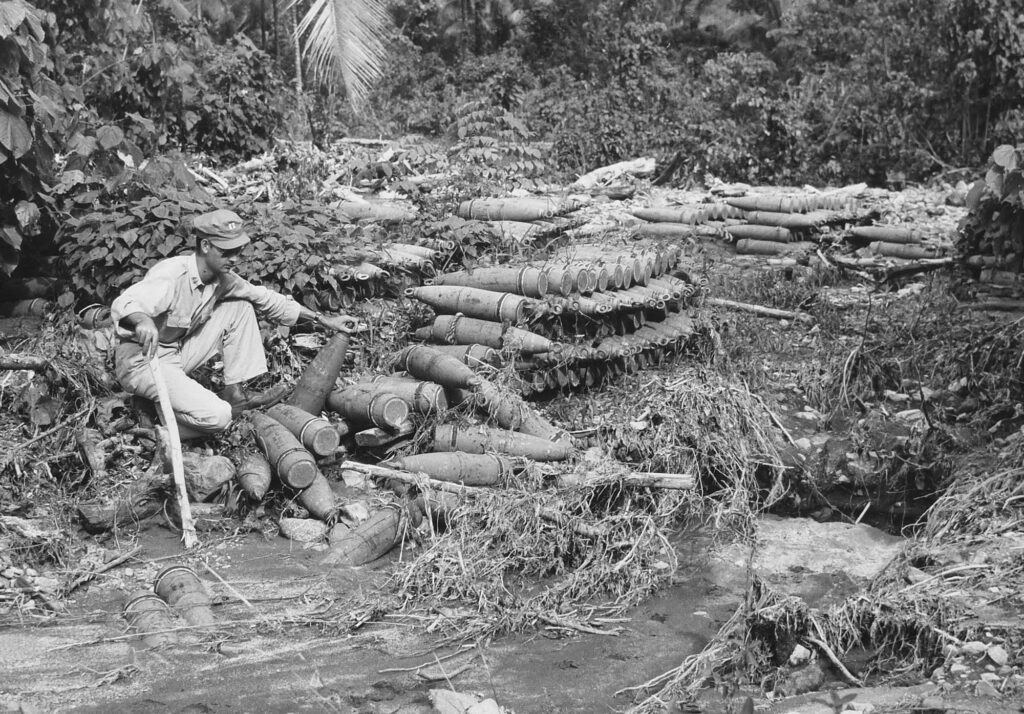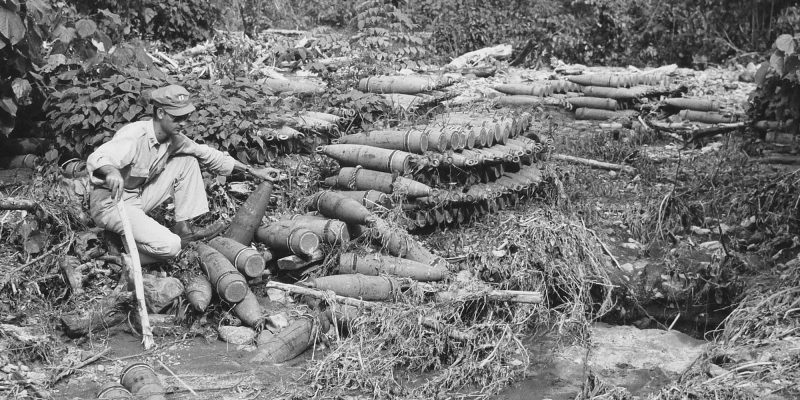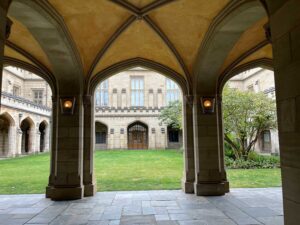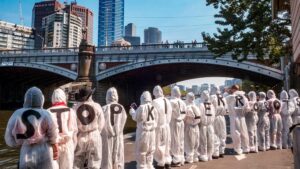
Although World War 2 ended over 70 years ago, many communities in what was the Pacific area of operations are still living with dangerous legacies of left over bombs and explosives.
Safe Ground researchers have already contributed a considerable amount of research and outreach to areas affected in the Pacific with field work in the Solomon Islands and Palau and plans to expand this field research in the near future.
To conduct effective field research, detailed desk research must first be undertaken.
Most historical information now available is of a broad and general nature with historians over the decades distilling the battle information into ‘Big Picture’ projects while much of the fine detail is subsequently lost.
The desk research currently being undertaken by Safe Ground is seeking the fine detail. Mette Eliseussen and John Rodsted have been trawling through original source material from military and national archives for the past three years and have built an extraordinarily detailed understanding of how and where the fighting in the Pacific took place. This research has allowed them to narrow down search areas to places often overlooked by history. Traditionally overlooked communities have been identified as areas of interest with the potential to be of great import
This research will hopefully translate to field projects in late 2017 if budgets can be found to facilitate field missions.
Any ultimate research would then be launched in appropriate forums such as international meetings on the Convention on Conventional Weapons.
Previous research projects that have been undertaken by Safe Ground have begun the international conversation on areas at risk of Explosive Remnants of War and led to donor funding and ultimately clearance efforts.



